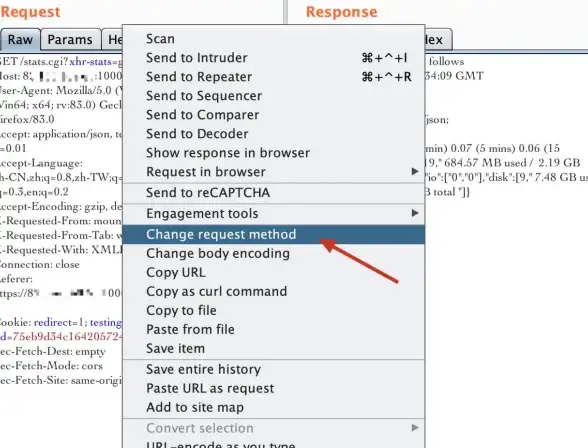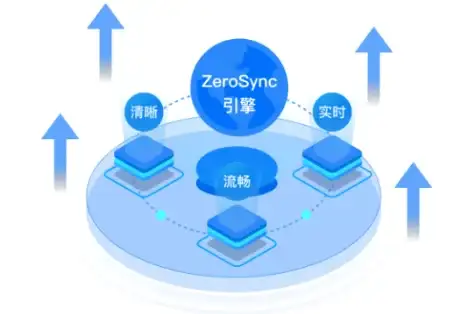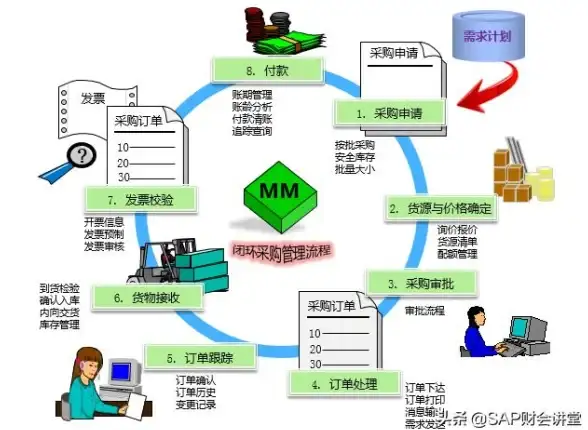接口请求 数据传输 php发送post_PHP实现POST请求的多种方法详解
- 问答
- 2025-08-01 18:27:07
- 3
PHP实现POST请求的多种方法详解:从基础到实战
最新动态:根据2025年8月发布的开发者调查报告显示,PHP仍然是后端开发中使用最广泛的脚本语言之一,其中HTTP请求处理占日常开发工作的30%以上,特别是在API对接、微服务通信等场景中,POST请求的使用频率显著高于GET请求。
为什么POST请求如此重要?
在Web开发中,POST请求就像是我们寄快递时填写的包裹单——它不仅能携带更多数据,还能更好地保护隐私,想象一下,GET请求就像把收件人信息写在快递箱外面,谁都能看见;而POST请求则是把信息装在箱子里,只有拆开才能看到。
POST请求特别适合以下场景:
- 提交表单数据(如用户注册、登录)
- 上传文件
- 与API接口交互
- 传输敏感信息(密码、支付信息等)
原生PHP实现POST请求
使用file_get_contents()方法
这个方法简单直接,适合初学者:
<?php
$url = 'https://api.example.com/submit';
$data = ['username' => '张三', 'password' => 'safe123'];
$options = [
'http' => [
'header' => "Content-type: application/x-www-form-urlencoded\r\n",
'method' => 'POST',
'content' => http_build_query($data)
]
];
$context = stream_context_create($options);
$result = file_get_contents($url, false, $context);
if ($result === FALSE) {
echo "请求失败啦!";
} else {
echo "服务器返回:".$result;
}
?>
小贴士:http_build_query()函数能把数组转换成URL编码的查询字符串,就像把一堆零散物品打包成规整的包裹。
使用cURL扩展
cURL是PHP中处理HTTP请求的瑞士军刀,功能强大:

<?php
$ch = curl_init();
curl_setopt($ch, CURLOPT_URL, "https://api.example.com/login");
curl_setopt($ch, CURLOPT_POST, 1);
curl_setopt($ch, CURLOPT_POSTFIELDS, http_build_query([
'email' => 'user@example.com',
'password' => 'mypassword'
]));
// 设置返回结果而不是直接输出
curl_setopt($ch, CURLOPT_RETURNTRANSFER, true);
// 对于HTTPS请求,你可能需要这两行(根据服务器配置)
curl_setopt($ch, CURLOPT_SSL_VERIFYPEER, false);
curl_setopt($ch, CURLOPT_SSL_VERIFYHOST, false);
$response = curl_exec($ch);
if (curl_errno($ch)) {
echo '哎呀,出错了: ' . curl_error($ch);
} else {
echo 'API返回: ' . $response;
}
curl_close($ch);
?>
实际开发经验:在生产环境中,建议保持SSL验证开启(去掉最后两行或设为true),虽然开发时可以临时关闭方便调试,但上线后一定要开启以保证安全。
发送JSON格式的POST请求
现在越来越多的API要求JSON格式的数据,这样传起来更规范:
<?php
$url = 'https://api.example.com/data';
$data = [
'product_id' => 12345,
'quantity' => 2,
'note' => '请周末送货'
];
$payload = json_encode($data);
$ch = curl_init($url);
curl_setopt($ch, CURLOPT_RETURNTRANSFER, true);
curl_setopt($ch, CURLOPT_CUSTOMREQUEST, "POST");
curl_setopt($ch, CURLOPT_POSTFIELDS, $payload);
curl_setopt($ch, CURLOPT_HTTPHEADER, [
'Content-Type: application/json',
'Content-Length: ' . strlen($payload)
]);
$result = curl_exec($ch);
curl_close($ch);
echo $result;
?>
常见坑点:很多新手会忘记设置Content-Type为application/json,导致服务器无法正确解析数据,一定要记得加上这个请求头!
处理文件上传的POST请求
文件上传是POST请求的典型应用,比如用户上传头像:
<?php
if ($_SERVER['REQUEST_METHOD'] === 'POST') {
$targetDir = "uploads/";
$targetFile = $targetDir . basename($_FILES["avatar"]["name"]);
// 简单的文件类型检查
$imageFileType = strtolower(pathinfo($targetFile, PATHINFO_EXTENSION));
if($imageFileType != "jpg" && $imageFileType != "png") {
echo "只允许上传JPG或PNG图片哦~";
exit;
}
// 移动临时文件到指定目录
if (move_uploaded_file($_FILES["avatar"]["tmp_name"], $targetFile)) {
echo "文件上传成功!保存为: " . $targetFile;
} else {
echo "上传过程中出错了...";
}
}
?>
<!-- HTML表单部分 -->
<form action="" method="post" enctype="multipart/form-data">
<label>选择你的头像:</label>
<input type="file" name="avatar" id="avatar">
<button type="submit">上传</button>
</form>
安全提醒:实际项目中一定要做更严格的文件验证,包括检查文件真实类型(而不仅是扩展名)、设置大小限制等,防止恶意文件上传。
使用GuzzleHTTP客户端库
当项目变得复杂时,使用专业的HTTP客户端库会让生活轻松很多,Guzzle是PHP中最流行的HTTP客户端:
<?php
require 'vendor/autoload.php';
use GuzzleHttp\Client;
$client = new Client([
'base_uri' => 'https://api.example.com',
'timeout' => 2.0, // 超时设置
]);
try {
$response = $client->post('/users', [
'form_params' => [
'name' => '李四',
'email' => 'lisi@example.com'
],
'headers' => [
'Authorization' => 'Bearer your_access_token_here'
]
]);
echo "状态码: ".$response->getStatusCode()."\n";
echo "响应体: ".$response->getBody();
} catch (\GuzzleHttp\Exception\RequestException $e) {
echo "请求失败: ".$e->getMessage();
}
?>
为什么选择Guzzle:

- 更简洁的API
- 支持异步请求
- 内置JSON处理
- 完善的错误处理机制
- 社区支持强大
实战:构建一个完整的API请求类
让我们把这些知识整合成一个实用的工具类:
<?php
class ApiClient {
private $baseUrl;
private $apiKey;
public function __construct($baseUrl, $apiKey = '') {
$this->baseUrl = rtrim($baseUrl, '/');
$this->apiKey = $apiKey;
}
public function post($endpoint, $data, $isJson = true) {
$url = $this->baseUrl.'/'.ltrim($endpoint, '/');
$headers = [];
if (!empty($this->apiKey)) {
$headers['Authorization'] = 'Bearer '.$this->apiKey;
}
if ($isJson) {
$headers['Content-Type'] = 'application/json';
$payload = json_encode($data);
} else {
$payload = http_build_query($data);
}
$options = [
'http' => [
'header' => $this->buildHeaders($headers),
'method' => 'POST',
'content' => $payload
],
'ssl' => [
'verify_peer' => false,
'verify_peer_name' => false,
]
];
$context = stream_context_create($options);
$result = file_get_contents($url, false, $context);
if ($result === false) {
throw new Exception("API请求失败: ".error_get_last()['message']);
}
return json_decode($result, true);
}
private function buildHeaders($headers) {
$headerStrings = [];
foreach ($headers as $name => $value) {
$headerStrings[] = "$name: $value";
}
return implode("\r\n", $headerStrings)."\r\n";
}
}
// 使用示例
$api = new ApiClient('https://api.example.com/v1', 'your_api_key_here');
try {
$response = $api->post('/orders', [
'product_id' => 456,
'quantity' => 3
]);
print_r($response);
} catch (Exception $e) {
echo "出错啦: ".$e->getMessage();
}
?>
常见问题与解决方案
Q1:为什么我的POST请求返回空白?
- 检查URL是否正确
- 查看服务器错误日志
- 确保PHP配置中
allow_url_fopen已开启 - 对于HTTPS请求,可能需要配置SSL证书
Q2:如何调试POST请求?
- 使用
var_dump($_POST)查看接收到的数据 - 检查请求头是否正确
- 使用Postman等工具模拟请求对比
- 查看网络请求的原始数据(浏览器开发者工具)
Q3:大文件上传失败怎么办?
- 调整
php.ini中的upload_max_filesize和post_max_size - 考虑分片上传方案
- 增加超时时间设置
性能优化小技巧
- 连接复用:使用cURL时,考虑重用句柄减少连接开销
- 异步请求:对于不依赖即时结果的请求,可以使用
curl_multi_*函数族实现并行处理 - 合理设置超时:根据业务场景设置适当的超时时间,避免长时间等待
- 数据压缩:对于大量数据传输,可以考虑启用gzip压缩
掌握PHP中的POST请求就像学会了网购的正确姿势——知道怎么打包数据(参数组织)、选择快递公司(cURL或Guzzle)、填写运单(请求头设置)和追踪包裹(响应处理),随着PHP的持续发展,处理HTTP请求的方式也在不断进化,但基本原理始终不变。
无论选择哪种方法,安全性始终是第一位的,加密敏感数据、验证输入、处理异常——这些好习惯能让你的代码既强大又可靠,去构建那些令人兴奋的网络应用吧!
本文由 银霞绮 于2025-08-01发表在【云服务器提供商】,文中图片由(银霞绮)上传,本平台仅提供信息存储服务;作者观点、意见不代表本站立场,如有侵权,请联系我们删除;若有图片侵权,请您准备原始证明材料和公证书后联系我方删除!
本文链接:https://vps.7tqx.com/wenda/507722.html









发表评论